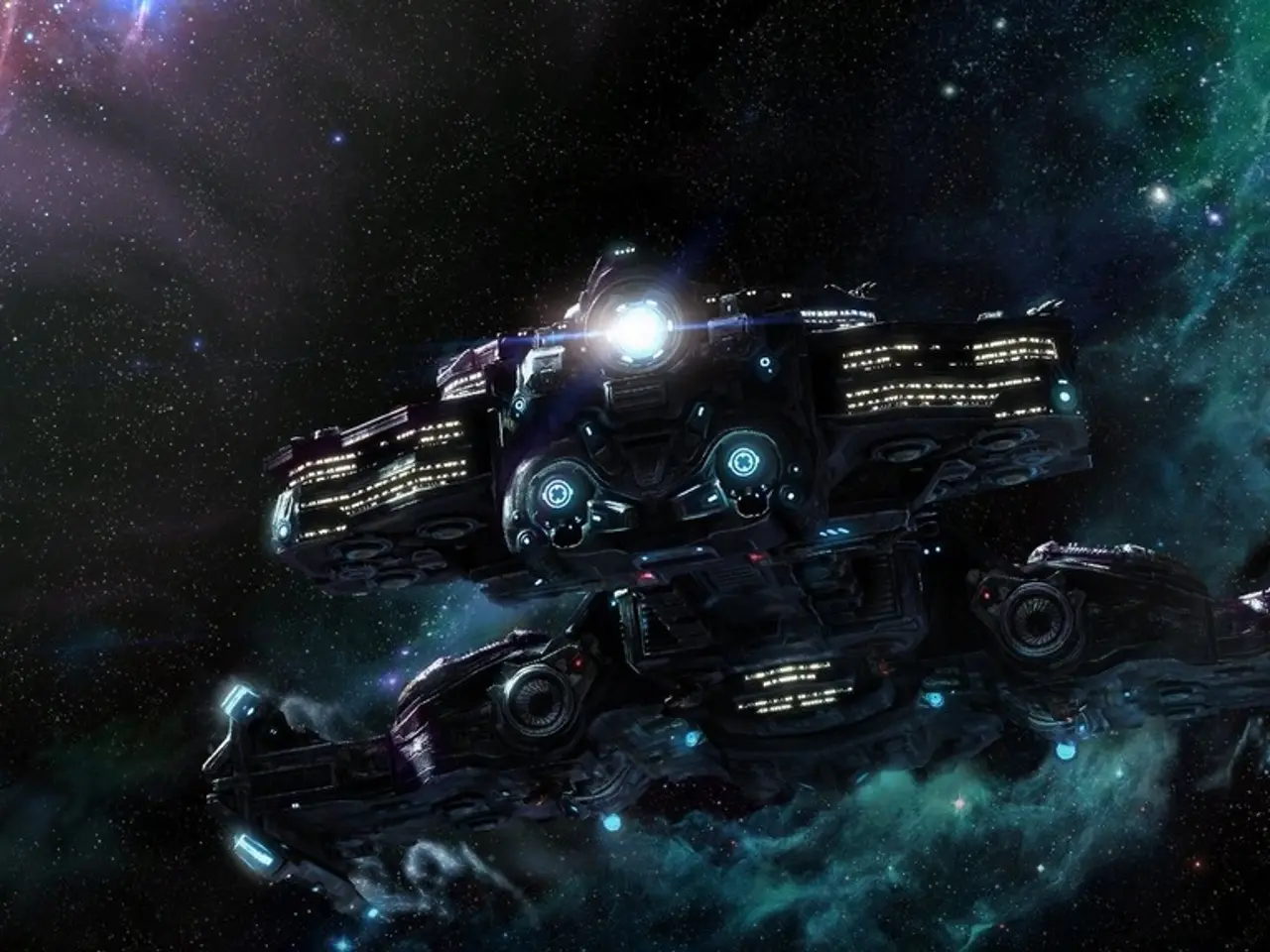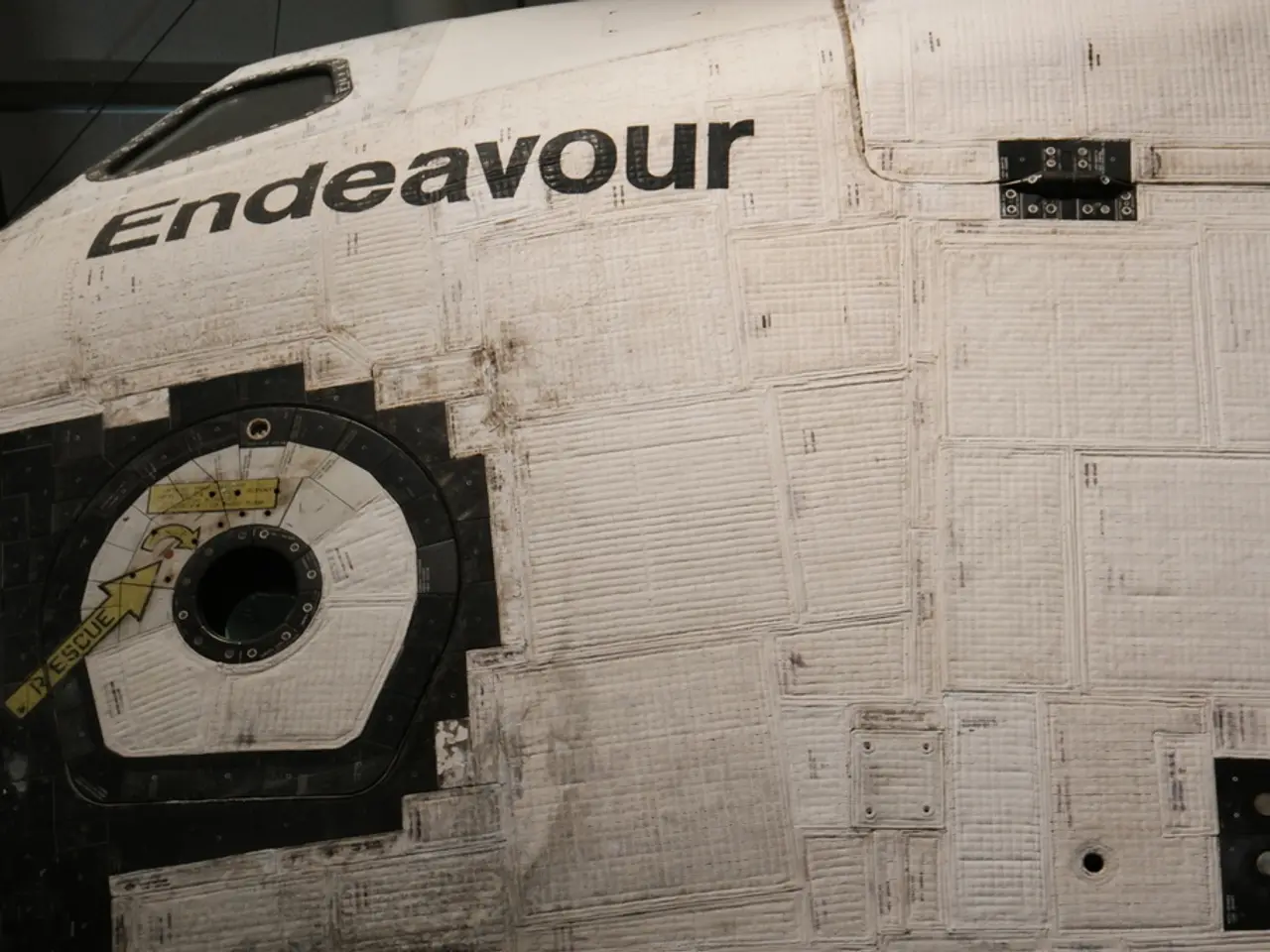Galactic marvels unveiled in the Bullet Cluster through James Webb Space Telescope's lens: this week's awe-inspiring celestial snapshot
The latest observations by the James Webb Space Telescope (JWST) have shed new light on the Bullet Cluster, a galaxy cluster located 3.7 billion light-years from Earth in the constellation Carina. The findings reveal a much more complex and chaotic history than previously understood, as well as detailed insights into its dark matter distribution.
### Key Findings on the Bullet Cluster’s History and Structure
The JWST observations suggest that the Bullet Cluster likely formed from more than one collision between galaxy clusters, not just a single head-on event. This is inferred from the elongated, asymmetric "hammerhead" shape of dark matter distribution, particularly in the larger sub-cluster on the left side, which suggests earlier mergers prior to the recent collision.
For the first time, JWST detected the collective glow of billions of stars that have been stripped from their original galaxies and now float freely between galaxies in each sub-cluster. These intracluster stars closely trace the dark matter distribution, providing a new method to map dark matter more accurately, even in such a turbulent environment.
The new refined maps reinforce that dark matter is remarkably non-interacting except through gravity. The dark matter aligns closely with the galaxies themselves and is not dragged behind like the hot gas, which is seen stuck in the middle of the collision and mapped in X-rays. This places stronger limits on any possible dark matter self-interaction, confirming its "invisible" and quiet nature during the merger process.
### Potential Future Observations with Nancy Grace Roman Space Telescope
While the search results do not detail specific plans for the Nancy Grace Roman Space Telescope regarding the Bullet Cluster, given its advanced infrared capabilities and wide-field imaging, it is likely to provide even deeper and wider-field surveys of the cluster to detect more intracluster stars and faint structures. It could also help refine dark matter maps further due to its ability to capture subtle gravitational lensing effects and track the evolution of cluster mergers in a broader context.
Overall, JWST has revolutionized our understanding of the Bullet Cluster’s chaotic merger history and provided a new window into mapping dark matter through intracluster light, setting the stage for future discoveries with upcoming telescopes like the Roman Space Telescope. The image, a composite of JWST's near-infrared data and Chandra's X-ray data, reveals that hot gas was pulled out of the galaxy clusters and left behind in the central region, while the dark matter associated with individual galaxy clusters stayed intact and was not dragged away. The Bullet Cluster is special because it acts as a magnifying lens, revealing the faintest and most distant objects due to gravitational lensing, and it is bound by gravity and forms a single entity. The image provides evidence that the Bullet Cluster may have a more complex collision history than previously thought.
Science has revealed that the Bullet Cluster, a distant galaxy cluster, may have undergone more than one collision, contrary to previous assumptions. This conclusion is drawn from the asymmetric distribution of dark matter observed by the James Webb Space Telescope (JWST), signaling earlier mergers before the recent collision (Environmental-science and Space-and-astronomy). Moreover, the advancements in technology, such as the JWST, have paved the way for future telescopes like the Nancy Grace Roman Space Telescope, with the potential to delve even deeper into the intricate structure of this cluster and provide further insights into the distribution of dark matter (Technology).




